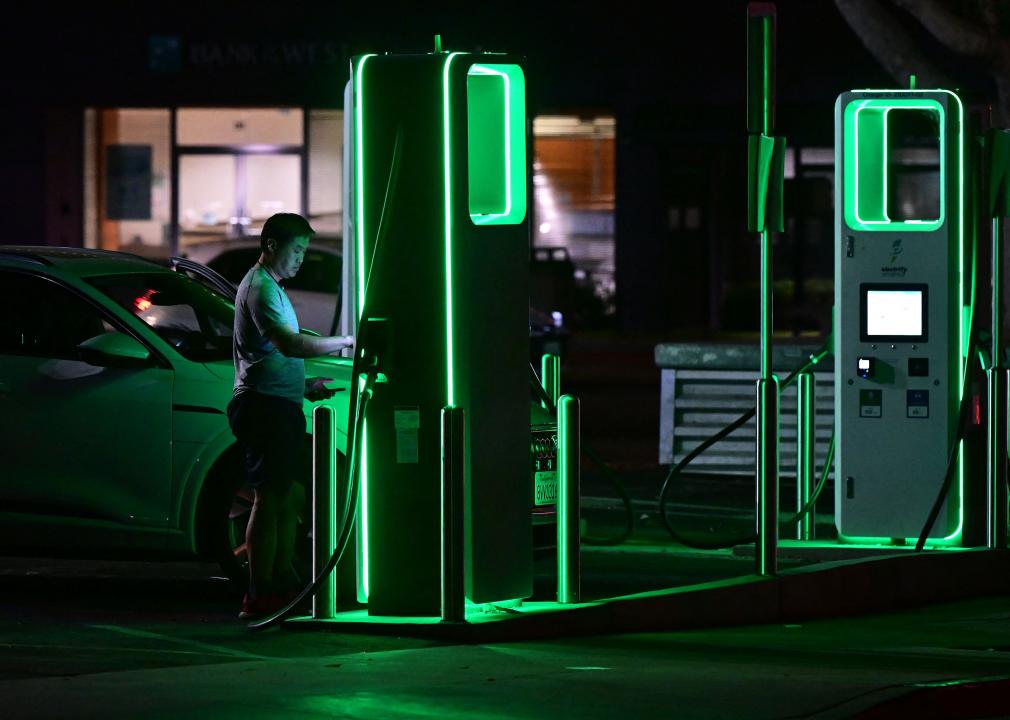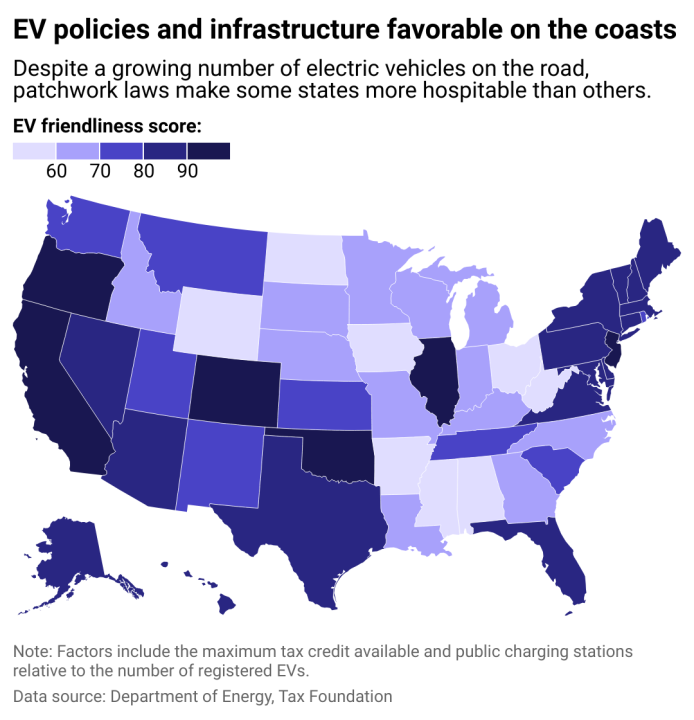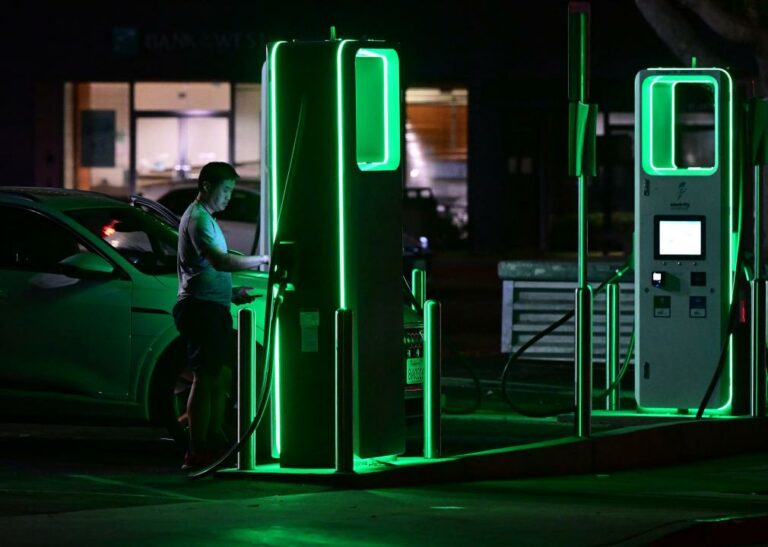The Most and Least Hospitable States for Electric Vehicle Ownership
The number of people purchasing and using electric vehicles in the United States reached record levels in 2024, driven by federal, state, and local incentives, as well as growing awareness about climate change. However, recent moves by the Trump administration to curb EV incentives, such as tax credits, and implement tariffs on EV parts are threatening continued growth.
Electric vehicles occupied approximately 8.6% of the new vehicle retail market in 2023, according to J.D. Power. The firm projects this number will plateau at about 9.1% in 2025. While California leads in EV adoption, the largest growth was recorded in New York, Florida, and Colorado.

Stacker analyzed data from the Department of Energy and the Tax Foundation to determine the most hospitable states for EV owners. The analysis considered factors such as:
- Number of charging stations per EV (excluding plug-in hybrids)
- Number of laws and incentives for EV ownership
- Annual in-state cost of owning an EV, including registration fees and tax credits
The widespread adoption of EVs benefits the environment, consumers, and national energy independence. EVs produce lower emissions, are more efficient, and have better fuel economy than gas-powered vehicles. While EVs can be more expensive upfront, consumers typically pay less for their use.

States with high urbanization rates, such as California, New Jersey, Connecticut, and Oregon, score as the most EV-friendly. These states offer additional EV tax credits ranging from $4,000 to $7,500, beyond the federal $7,500 tax credit. They also have dense charging networks and high numbers of registered EVs.
In contrast, states with large rural areas, such as South Dakota, Nebraska, Louisiana, Iowa, and Arkansas, are among the least EV-friendly. These states have limited charging infrastructure, no additional EV tax credits, and lower EV adoption rates.
The insufficient EV infrastructure in rural areas remains a critical barrier to adoption. Residents of these areas face longer commutes and greater travel distances, contributing to range anxiety and the need for more charging stops.
As EV adoption continues to grow, states are grappling with the impact on their revenues from gas taxes and EV tax credits. Some states, like Vermont, are considering alternative fee structures, such as miles-traveled fees, to recover lost revenue.



